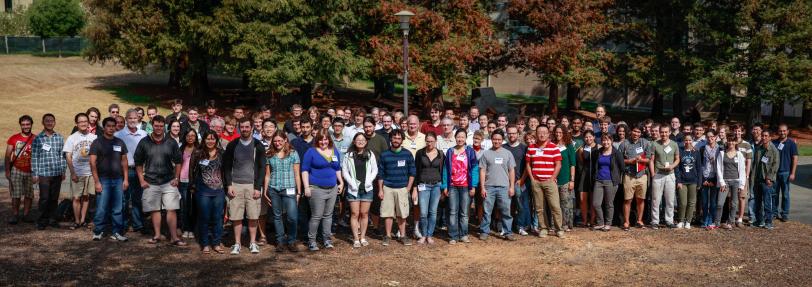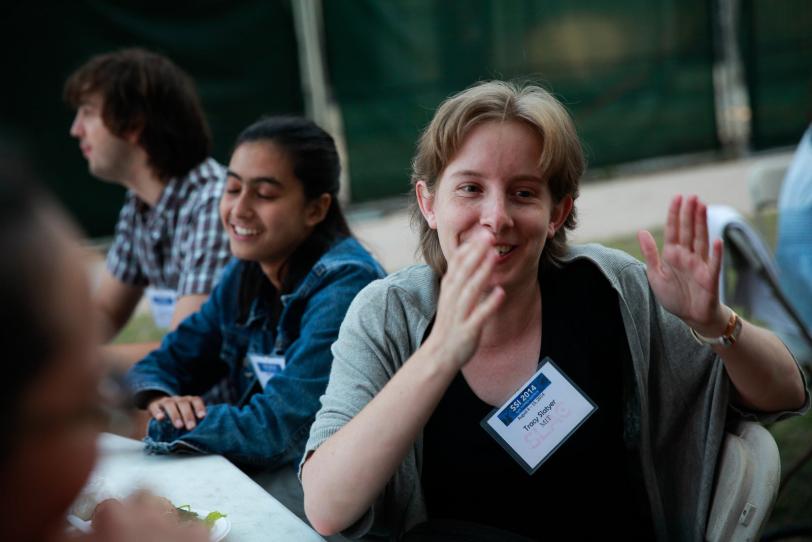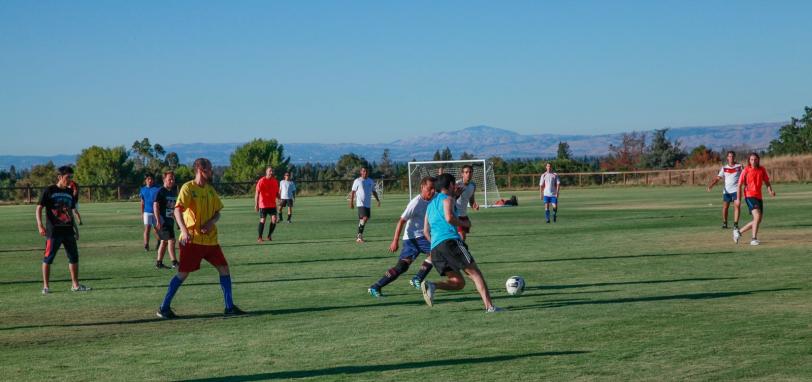SLAC Summer Institute Students Take a Close Look at Dark Matter
Physicists have good reason to believe 85 percent of the matter in the universe is currently undetectable. But not being able to see it didn’t keep students at the 42nd SLAC Summer Institute from learning about it.
Physicists have good reason to believe 85 percent of the matter in the universe is currently undetectable. But not being able to see it didn’t keep students at the 42nd SLAC Summer Institute (SSI), held at the Department of Energy's SLAC National Accelerator Laboratory, from learning about it.
At this year’s institute, "Shining Light on Dark Matter," more than 150 students from all over the world spent two weeks immersed in that mysterious substance that can only be detected by its gravitational effects on the matter we do see.
"Dark matter is hot right now," said JoAnne Hewett, head of SLAC's Particle Theory group and SSI organizer. "There are a lot of experiments coming on line in the near future to search for it.” They include several with SLAC involvement, such as SuperCDMS-SNOLAB and LZ, both of which will look for dark matter deep underground, and the Fermi Gamma-ray Space Telescope, which looks for signs of dark matter in space.
This experimental reach – from beneath the Earth's surface to the vastness of space – is another reason dark matter is a compelling topic, said Risa Wechsler, a co-organizer of SSI and astrophysicist with the Kavli Institute for Particle Astrophysics and Cosmology, a joint SLAC/Stanford institute.
"It's one of the topics that integrates astrophysics and particle physics," she said. "We've got a good mix of students and a good mix of instructors. The particle physicists are really trying to explain their field to the astrophysics students and the astrophysicists are trying to explain their field to the particle physics students."
This made for lively question and answer sessions, Hewett said. "I think the students had a really good time."
Fatemeh Elahi, a graduate student in particle theory from Notre Dame University in Indiana, called the experience "a storm of knowledge." She said she had just started studying dark matter recently, and the amount of information about it contained in observations of the cosmos was a revelation. "I know we still have a long path in front of us, but I'm amazed we can predict cosmological features as well as we can," she said.
The students took their own first steps along that path by working on projects devised by the SSI organizers. Groups of students designed dark matter experiments or theorized about dark matter properties, then presented their results to their peers on the final afternoon.
"A lot of the students came up with their own equations and wrote mini-simulations to capture their ideas," Wechsler said, adding that some of the work was of high enough quality to form the basis for scientific papers: "They've really put in a lot of work."
Elahi had another name for it. "I can't deny how much fun I'm having with this," she said.

Contact
For questions or comments, contact the SLAC Office of Communications at communications@slac.stanford.edu.
SLAC is a multi-program laboratory exploring frontier questions in photon science, astrophysics, particle physics and accelerator research. Located in Menlo Park, Calif., SLAC is operated by Stanford University for the U.S. Department of Energy's Office of Science.
SLAC National Accelerator Laboratory is supported by the Office of Science of the U.S. Department of Energy. The Office of Science is the single largest supporter of basic research in the physical sciences in the United States, and is working to address some of the most pressing challenges of our time. For more information, please visit science.energy.gov.







